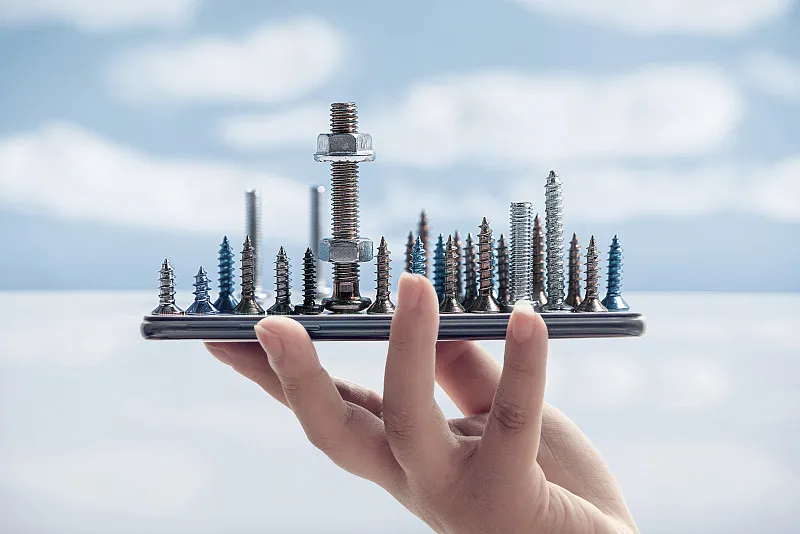How to Determine the Quality of Furniture Hardware?

How to Judge the Quality of Furniture Hardware
Furniture often experiences strange noises and stability issues during use, which are often indicative of poor-quality hardware components. Understanding the quality of furniture hardware is crucial, especially in a market with fluctuating prices where buyers must spend considerable time sifting through manufacturers to find those offering high-quality products.
The Importance of Hardware Quality in Furniture
The quality of hardware is an essential factor for buyers to consider, particularly in the current chaotic market for furniture hardware accessories. When the prices of substandard products are on par with those of high-quality ones, it significantly affects buyers’ judgments.

Hardware’s Role in Furniture Stability and Lifespan
Hinges, wheels, slides, connectors, shelf supports, handles, sofa legs, and other familiar terms are all part of the hardware components that are indispensable in the furniture assembly process. Not only do the Board, glue and surface coatings determine the quality of furniture, but the stability and lifespan of furniture are also closely related to the hardware used. High-quality hardware not only enhances the practicality of furniture but also extends its lifespan. However, it’s a matter of concern to determine what standards hardware must meet to be considered qualified

Price Differences Due to Hardware
Hardware is closely related to the price of furniture, which is a concern for consumers. In fact, a significant amount of hardware is used in each piece of furniture, and the cost of these components is closely tied to the final selling price of the furniture.
For example, a hinge used to connect doors and windows can cost as little as 0.8RMB for a low-quality option, while a high-quality hinge can range from 7RMB to 20RMB, highlighting the significant price difference. If you’ve ever wondered why two pieces of furniture with similar materials, styles, colors, and sizes can have a price difference of more than double, it might be due to the hardware used.

Warranty and Special Product Coverage
Given the importance of hardware in furniture, what special guarantees do merchants offer in terms of after-sales protection? Most furniture manufacturers do not provide separate warranties for hardware components; instead, they are usually guaranteed together with the furniture for 3 or 5 years. Conventional hardware components cannot be guaranteed separately, but if consumers have special requirements, it can be negotiated. Moreover, if hardware components fail within the warranty period of the furniture, they are guaranteed to be repaired or replaced for free. However, once the warranty period expires, consumers will have to pay for the cost of the hardware and any service fees for repairs or replacements.
In reality, the cost of replacing hardware components is not a significant issue. The most challenging part is that some special or old key components are difficult to find due to rapid product updates and the elimination of molds, which can be frustrating. This can lead to otherwise good-quality furniture being “phased out,” resulting in significant losses.

Safety Hazards of Inferior Hardware
If a child’s bed, cabinet, or chair suddenly breaks or has a part fall off, it is a dangerous situation that is closely related to the quality of children’s furniture hardware. When selecting furniture for children, in addition to environmental concerns, product stability and the safety factor of accessories should not be overlooked. Providing stable and safe furniture for children who like to jump and climb is not only the responsibility of parents but also that of all children’s furniture brands.

Quality Inspection Process in Hardware Factories
First Article Inspection
Before mass production begins, the production department must inspect the first article to confirm its quality. The qualified first article sample is then handed over to the quality control department’s inspector for further confirmation. Only after the inspector’s approval can the workshop proceed with mass production, and the first article sample is retained until the process is completed.
Patrol Inspection
During the mass production of products in the workshop, both the workshop’s self-inspection personnel and the quality control department’s inspectors should conduct quantitative spot checks on products from each process at regular intervals. In addition, they must manage the quality of the entire production process, ensuring detailed control over each step.
End Article Inspection
After the production of a batch of products is completed, the quality control department’s inspector must inspect the end article and record the results.
Handling of Defective Products
- Defective first articles must be clearly marked and placed separately to avoid confusion and affect mass production.
- Defective products found during production should have their defects clearly marked, with the issues clearly written down to avoid such problems in subsequent production.
- Strict quality control of the first article and during production ensures that there are generally no defective products in the end articles and pre-shipment inspections.
